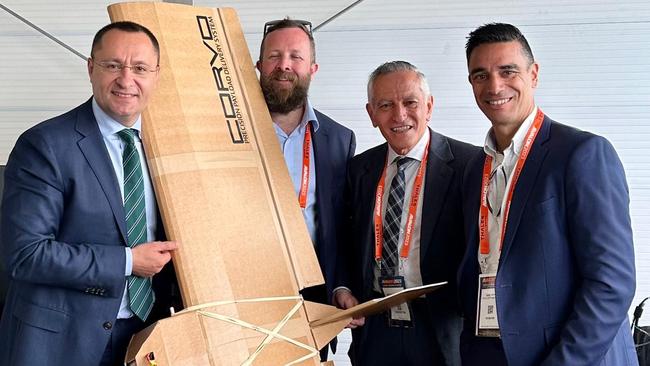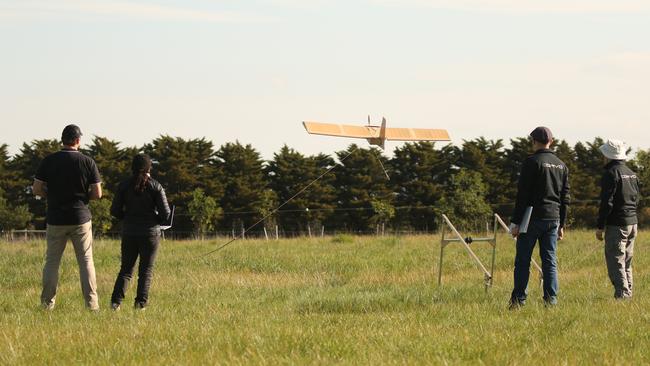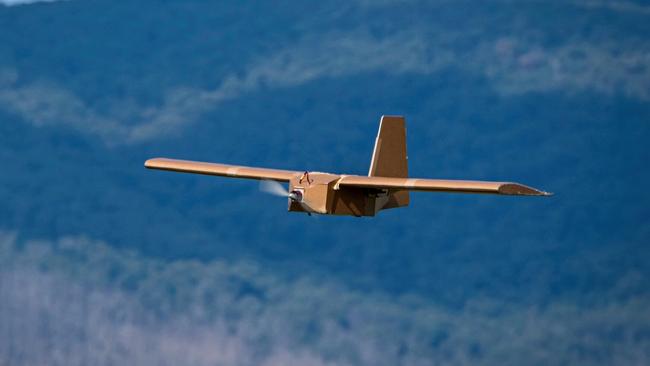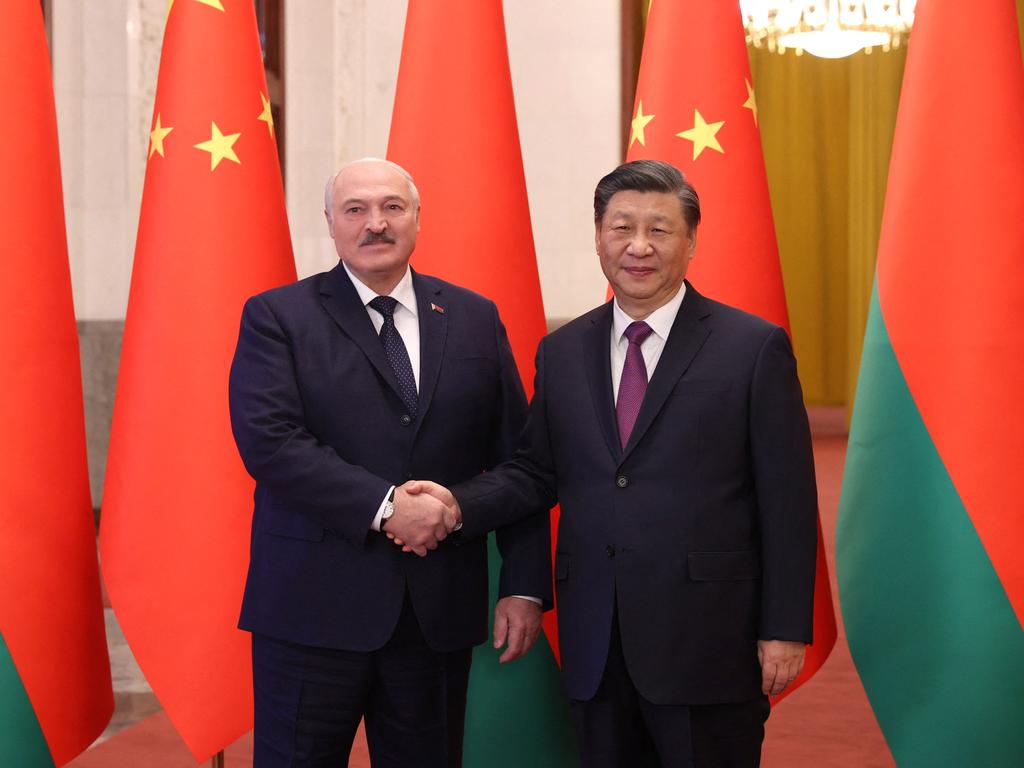Cheap Australian drones made of cardboard helping Ukrainian troops
Cheap Australian drones made out of cardboard and rubber bands are helping Ukrainian soldiers fight off Russian invaders | WATCH

Cheap Australian drones made of cardboard and rubber bands are helping Ukrainian troops fight off Russian invaders, as part of a $33m commitment to supply the country with an array of unmanned systems.
At least 100 of the flat-packed drones are being supplied to Ukraine each month, allowing President Volodymyr Zelensky’s forces to drop bombs, deliver supplies and undertake vital reconnaissance missions.
The Australian army is yet to purchase any of the catapult-launched aircraft for its own use, in a story familiar to many local defence sector innovators.
The unmanned aerial vehicles, made by Melbourne-based Sypaq, are designed to be expendable on the battlefield, but some in Ukraine have undertaken 60 flights.
The Precision Payload Delivery System drones are constructed from thick, wax-coated cardboard and heavy-duty rubber bands that secure the wings.
They are controlled by a military-grade guidance system that requires no user input once the aircraft is launched.
At somewhere between $1000 and $5000 each – the exact cost is classified – they can be used to overwhelm opposing forces in a contest of attrition, forcing the enemy to use more expensive hardware to take them out.
The Australian viewed the drone at the Australian International Airshow at Avalon, in Victoria, where Defence Minister Richard Marles and Ukrainian ambassador Vasyl Myroshnychenko were also provided with a first-hand briefing on the aircraft.
Mr Myroshnychenko said the appearance of the drone was deceptive, and they were already being used by Ukrainian soldiers for a variety of missions, including lethal ones.
“When you look at it, it looks like something that kids would play with,” the ambassador said.
“But when you see what it can do it’s really amazing.
“From what I hear they have been very good at inflicting lots of damage on the enemy.
“Our drone teams within MOD are very sophisticated guys. There is a great deal of R&D and innovation going on in that department. And because they run a large number of UAVs they have become some of the best teams in the world.”

Revelation of the role Australian drones were playing in Ukraine emerged as the war-torn nation denied it was behind a string of drone attacks inside Russian territory on Tuesday, including one that crashed barely 90km from the Kremlin.
Russian media said the drone had fallen within metres of a gas distribution station owned by Gazprom, the state-controlled energy giant. It was identified as a UJ-22 Airborne, a strike drone with a range of almost 800km manufactured by Ukraine’s Ukrjet company.
Mykhailo Podolyak, a Ukrainian presidential adviser, tweeted on Thursday: “Ukraine doesn’t strike at the Russian Federation’s territory. Ukraine is waging a defensive war to de-occupy all its territories.”
Sypaq developed the cardboard drone, which comes in 3kg and 5kg payload sizes, to meet a need identified by the Australian army for “last-mile logistics”.

It is yet to receive any ADF orders, but Sypaq chief engineer Ross Osborne said the aircraft met one of the key challenges being experienced by the Ukrainian military – getting large numbers of drones into the theatre. “The flat pack is a key feature there,” he said. “We can stack these up on a pallet. We also developed modular avionics and propulsion sets that can hopefully achieve a bit of reuse.”
He said the company spent a lot of time on the design “so that someone who wasn’t a UAS (unmanned aerial system) specialist could operate it”.
“For me, I’m so proud to see our systems go into a conflict zone,” Mr Osborne said.
“Ukraine was already a very capable UAS customer, but a customer that doesn’t speak the best English. And they’ve been able to take our system with no training from us, just instructions and videos, and deploy them really successfully.”
Mr Osborne said the drone had a high level of autonomy once launched. “When it’s operating with no data link, obviously it’s set and forget, and it does a great job of flying down range, monitoring the terrain and figuring out a landing pattern and approach, given the weather conditions,” he said.
The $33m unmanned systems commitment brings Australia’s military support for Ukraine so far to $510m.
More Coverage









To join the conversation, please log in. Don't have an account? Register
Join the conversation, you are commenting as Logout